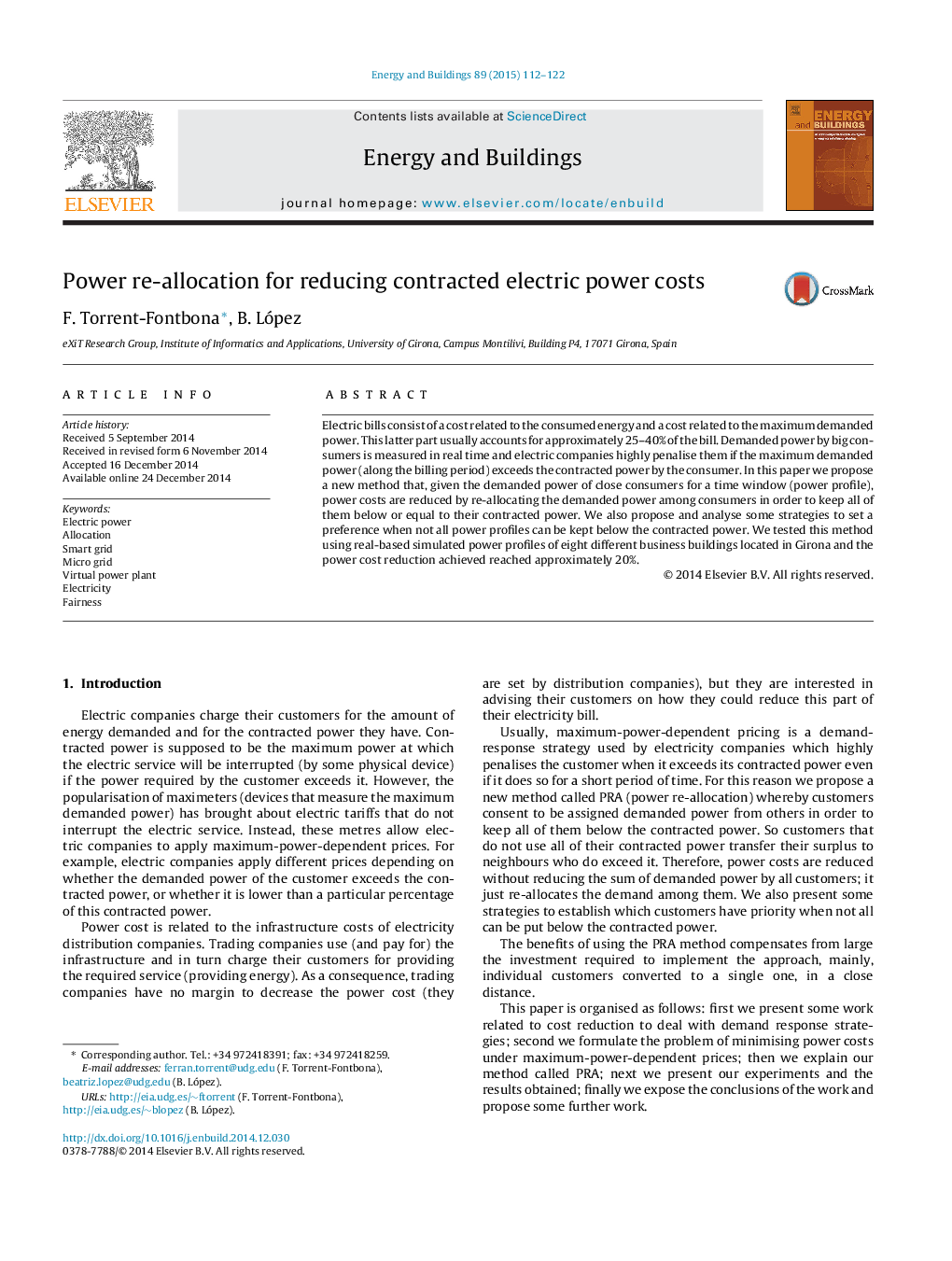| Article ID | Journal | Published Year | Pages | File Type |
|---|---|---|---|---|
| 262629 | Energy and Buildings | 2015 | 11 Pages |
•We present a method that reduces power costs about 20%.•The method allocates power costs among consumers of the same coalition.•The method includes mechanisms of fairness.•We tested the method with power profiles of eight real consumers (business buildings).
Electric bills consist of a cost related to the consumed energy and a cost related to the maximum demanded power. This latter part usually accounts for approximately 25–40% of the bill. Demanded power by big consumers is measured in real time and electric companies highly penalise them if the maximum demanded power (along the billing period) exceeds the contracted power by the consumer. In this paper we propose a new method that, given the demanded power of close consumers for a time window (power profile), power costs are reduced by re-allocating the demanded power among consumers in order to keep all of them below or equal to their contracted power. We also propose and analyse some strategies to set a preference when not all power profiles can be kept below the contracted power. We tested this method using real-based simulated power profiles of eight different business buildings located in Girona and the power cost reduction achieved reached approximately 20%.
